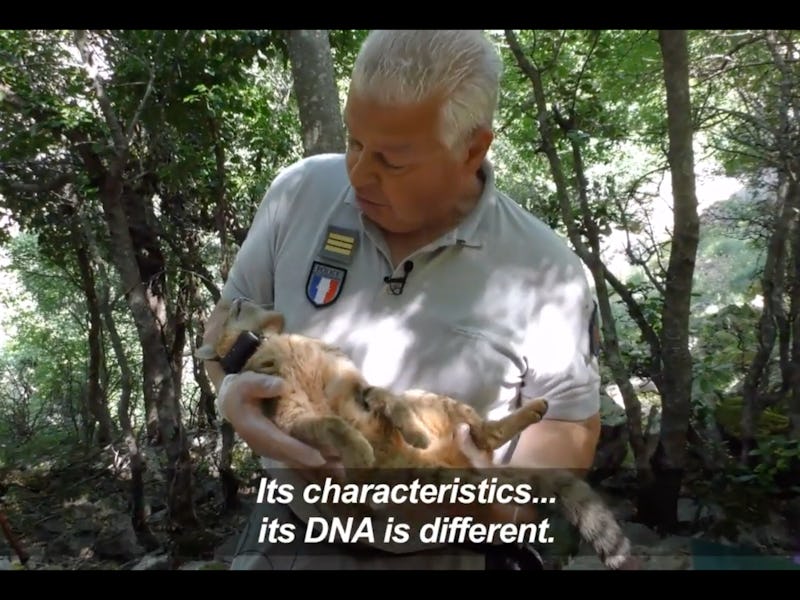Scientists Suspect Mediterranean "Cat-Fox" May Be an Entirely New Species
"It's a wonderful discovery."

Stalking the forests of a Mediterranean island is a predator that’s as mysterious as it is deadly. The oral tradition has kept knowledge of the “ghjattu volpe” — the cat-fox — alive over generations, even though the animal has rarely ever been spotted. Shepherds and farmers on the island of Corsica told stories of the small forest cat attacking their sheep’s and goats’ udders, but officially, the animal didn’t exist in the scientific record.
In 2008, that started to change when a cat-fox got caught in a chicken coop by accident. In an effort to figure out just what kind of animal was roaming the mountainous forests on Corsica, wildlife officials started placing scent traps that would encourage the cats to rub up against them. In 2012, one of these devices — a simple contraption involving a wooden post and a scented attractant — trapped enough fur from a cat-fox to yield a DNA sample. In 2016, researchers captured their first live cat-fox, and in the time since, they’ve captured, examined, and released 12 of the 16 that have been spotted in the area.
Now they’re that much closer to determining whether the cat-fox is indeed a unique species.
“We believe that it’s a wild natural species which was known but not scientifically identified because it’s an extremely inconspicuous animal with nocturnal habits,” Pierre Benedetti, the chief environmental technician for France’s National Hunting and Wildlife Office (ONCFS), told French news outlet AFP.
“It’s a wonderful discovery,” he added.
The small cat is about the size of a house cat, averaging just about 14 inches from nose to tail. Its tail typically has four black rings and a black tip.
“By looking at its DNA, we could tell it apart from the European wildcat, Felis silvestris silvestris,” said Benedetti. “It’s close to the African forest cat, Felis silvestris lybica, but its exact identity is still to be determined.”
Much remains to be known about the cat, but Benedetti told AFP he suspects it could have been brought to Corsica around the year 6,500 B.C., which would mean it was of Middle Eastern origin.
But only further catch-and-release analysis can help him be sure.